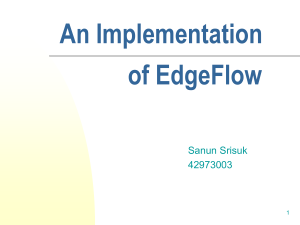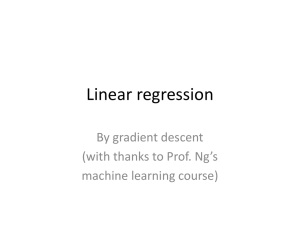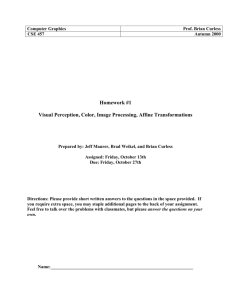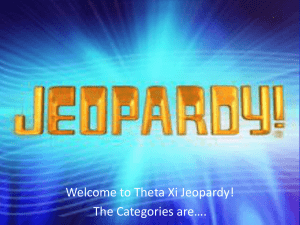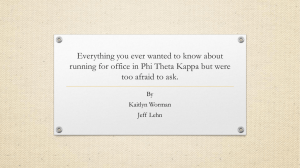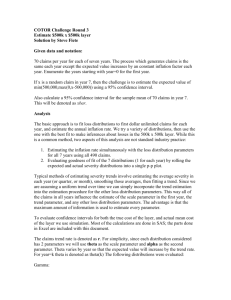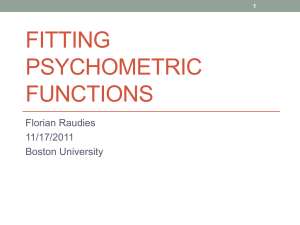GNP
advertisement
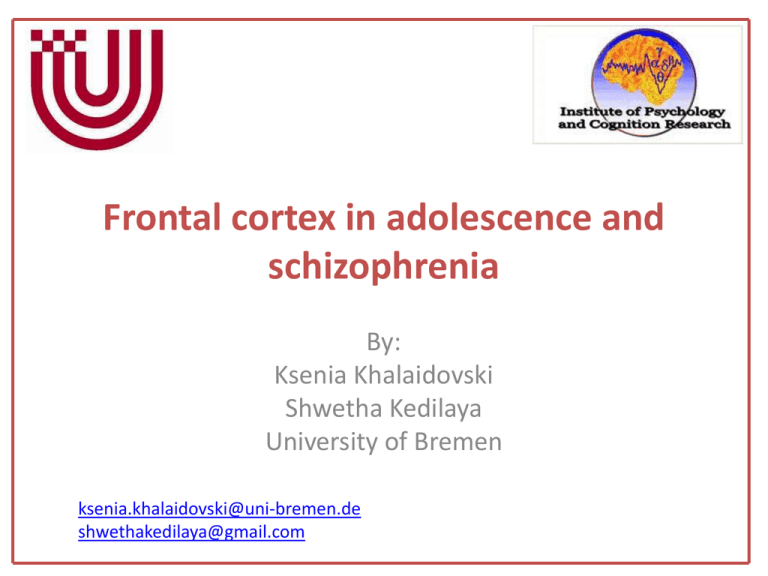
Frontal cortex in adolescence and schizophrenia By: Ksenia Khalaidovski Shwetha Kedilaya University of Bremen ksenia.khalaidovski@uni-bremen.de shwethakedilaya@gmail.com Frontal cortex - Executive function Problem solving High level reasoning Judgment Impulses Adolescence Schizophrenia 1 Multistable perception Stroboscopic Stroboscopic Alternating Alternating Motion Motion (SAM) (SAM) Ambiguous Unambiguous Presumed Percept Perceptual switch Motor response Rubin vase (Rubin, 1915) Switching Non-switching 2 Event-Related Oscillations Gamma (28-48 Hz) Beta (15-30 Hz) Alpha (8-13 Hz) Focussed attention Memory Executive functions (Basar-Eroglu et al., 2001) Theta (4-7 Hz) Delta (0.5-4 Hz) Involvement in top-down processing during multistable perception (Mathes et al., 2014) 3 Relation switching vs. non-switching time periods in dB Modulation of theta activity during adolescence Ambigous task Unambigous task ** (p < 0.005) n. s. Adolescents Young adults (13-15 years; N = 15) (20-27 years; N = 15) Adolescents Young adults 4 Theta modulation by adolescence Enhancement of theta activity increased with age only during the ambiguous task This may imply that cognitive regulation of the perceptual switches develops during adolescence This may reflect maturation of focused attention, which plays an important role for cognitive control of the current percept 5 Modulation of theta activity in schizophrenia patients Switching vs Non-switching Ambiguous: Controls > Patients F(1,22) = 4.5, p<.05 Unambiguous: Controls > Patients F(1,22) = 5.1, p<.05 6 Role of frontal theta during multistable perception Initiation of switch and reorganization of the percept activates frontal cortex (Knapen et al., 2011; Sterzer et al., 2009). Frontal functions of the brain depend on its theta state (Basar et al., 1999) Theta is involved in initiation of switch and reorganization of the percept during multistable perception Theta modulation by schizophrenia patients Schizophrenia patients are known to depend more on sensory information of the stimuli (Dima, 2009; Keil et al, 1998) Theta activity is involved in topdown processing during multistable perception (Mathes et al, 2014) The patients with schizophrenia indicate a weak top-down guidance of visual object perception. 7 Take home message In both studies healthy adults showed top-down regulation of the perceptual switches reflected by the enhanced frontal theta activity Adolescence Schizophrenia 8 Bibliography • Basar-Eroglu, C., Demiralp, T., 2001. Event-related theta oscillations: an integrative and comparative approach in the human and animal brain. Int J Psychophysiol 39, 167-195. • Basar, E., Basar-Eroglu, C., Karakas, S., & Schurmann, M. (1999a). Are cognitive processes manifested in event-related gamma, alpha, theta and delta oscillations in the EEG? Neurosci Lett, 259(3), 165-168. • Dima, D., Roiser, J. P., Dietrich, D. E., Bonnemann, C., Lanfermann, H., Emrich, H. M., & Dillo, W. (2009). Understanding why patients with schizophrenia do not perceive the hollow-mask illusion using dynamic causal modelling. Neuroimage, 46(4), 1180-1186. doi: 10.1016 / j.neuroimage .2009.03.033 • Keil, A., Elbert, T., Rockstroh, B., Ray, W.J., 1998. Dynamical aspects of motor and perceptual processes in schizophrenic patients and healthy controls. Schizophrenia research 33, 169- 178. • Knapen, T., Brascamp, J., Pearson, J., van Ee, R., & Blake, R. (2011). The role of frontal and parietal brain areas in bistable perception. J Neurosci, 31(28), 10293-10301. doi: 10.1523/JNEUROSCI.172711.2011 • Mathes, B., Khalaidovski, K., Schmiedt-Fehr, C., Basar-Eroglu, C., 2014. Frontal theta activity is pronounced during illusory perception. resubmitted after minor revisions. • Sterzer, P., Kleinschmidt, A., & Rees, G. (2009). The neural bases of multistable perception. Trends Cogn Sci, 13(7), 310-318. doi: 10.1016/j.tics.2009.04.006 9
